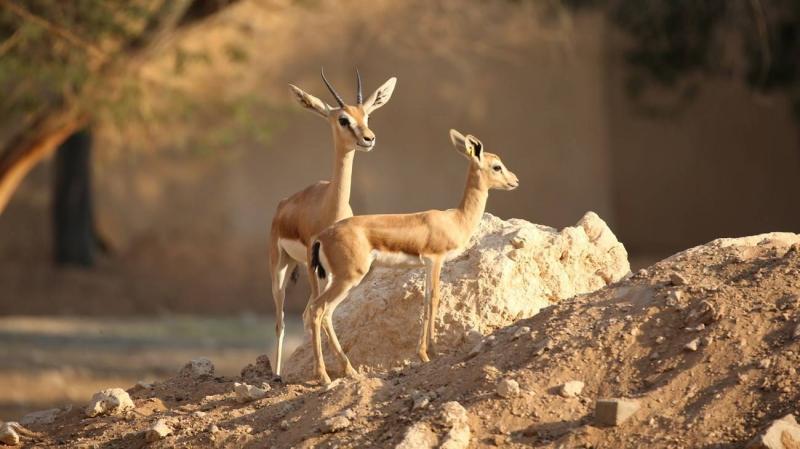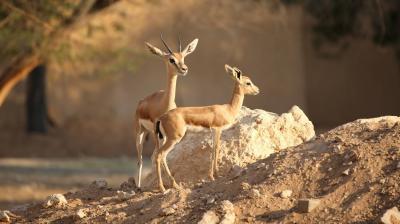The Ministry of Climate Change and Environment has revealed details about the inclusion of nine globally significant biodiversity sites in the United Arab Emirates as part of a new global achievement that crowns the country's efforts during the Year of Sustainability and its ongoing endeavors to preserve nature and protect living organisms from the threat of extinction. These sites have biological significance and host a large number of endangered plants and animals.
This achievement was presented during a project outcome meeting with UAE President Sheikh Mohammed bin Zayed Al Nahyan yesterday, coinciding with World Environment Day, where he met with a group of youth, entrepreneurs, and environmental leaders who presented innovative initiatives and ideas that align with the UAE's approach to supporting sustainability through innovation.
The nine sites are: Al Maha Wildlife Reserve in Abu Dhabi, Marwah Marine Sanctuary in Abu Dhabi, Al Yasat Marine Protected Area in Abu Dhabi, Al Marmoom Reserve in Dubai, Dubai Desert Conservation Reserve, Wadi Al Helo in Sharjah, Khorfakkan and Shark Island in Sharjah, Wadi Al Beeh in Ras Al Khaimah, and Seniah Island and Khor Al Baida in Umm Al-Quwain.
This achievement enhances the UAE's global status in finding practical solutions to promote biodiversity through nature-based solutions to overcome various environmental and climatic challenges.
The accomplishment resulted from a project executed in collaboration between the Ministry of Climate Change and Environment and the International Union for Conservation of Nature (IUCN), involving the participation of relevant sectors from both government and private entities. A team of 75 Emirati and resident experts trained by international specialists, under the ministry's leadership, worked on the project.
The project was completed last year by identifying nine key biodiversity areas (KBAs) in the state according to the global criterion for identifying key biodiversity sites. These sites have been fully published on the global database of key biodiversity sites.
The UAE is home to the largest population of the Arabian Oryx in the world, after it was nearly extinct in the 1970s. The Arabian Oryx can be found in both Al Marmoom Reserve in Dubai and Al Maha Wildlife Reserve in Abu Dhabi. Additionally, two sites were designated as significant global biodiversity sites for the Dugong. These two sites are the first important biodiversity areas for Dugongs in the Middle East.
The UAE hosts the second-largest populations of Dugongs worldwide, found in both the Al Yasat and Marwah Marine Protected Areas. Furthermore, three sites were identified for three endemic species of geckos (Marguerite's Gecko, Emirati Gecko, and Mountain Headed Gecko), marking the first key biodiversity sites for reptiles in the UAE.
The percentage of protected significant sites amounts to five protected sites, with 100% coverage, and the protected area of significant biodiversity sites stands at 98%.
This achievement contributes to raising the indicator of the percentage of protected terrestrial areas of significant biodiversity sites in the state from 51.55% to 98.08%, the indicator of the percentage of protected marine areas of significant biodiversity from 48.61% to 98.17%, and the indicator of the percentage of the area of important biodiversity areas covered by nature reserves from 37.59% to 98.13%.
The International Union for Conservation of Nature is the world's leading environmental organization and the largest global institution in terms of natural information. The Union operates in over 160 countries and has more than 1,400 members including governments, governmental and non-governmental organizations, scientific entities, and indigenous peoples' organizations.
Key biodiversity areas play an important role in contributing to the protection of biodiversity from extinction and maintaining its stability, providing a safe environment for many plant and animal species, and supporting ecological balance by bolstering various ecosystems and providing essential natural resources, in addition to delivering natural environmental services such as air and water purification, soil quality improvement, carbon storage, and serving as a genetic resource for plants and animals.




